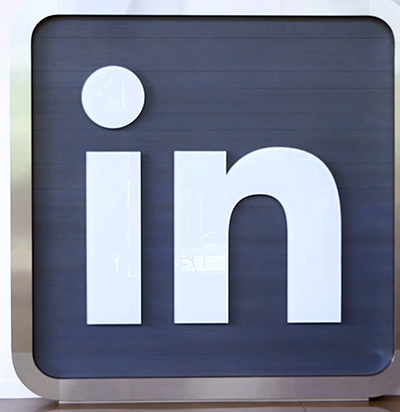90% of sales team empowered by Tableau Server
Centralize petabytes of data from disparate systems
More proactive churn & performance analysis
LinkedIn is the world’s largest professional network with more than 467 million users. To empower LinkedIn’s sales force, the business analytics team adopted Tableau Server to centralize petabytes of customer data. Today, thousands of sales people—90% of LinkedIn’s sales force—access Tableau Server on a weekly basis. With Tableau dashboards, sales can track performance and predict churn—creating a more proactive sales cycle and as a result, increased revenue.
Sales teams may look at different ways to understand performance at their level so that they have a sense of urgency when things aren't going well, or when they know that they have been doing a good job and that they need to keep it up.
A scalable solution: Tableau Server empowers 90% of sales team
LinkedIn’s sales data—sometimes close to a petabyte or more—exists among internal databases, Google Analytics, Salesforce.com, and third party tools. Previously, one analyst on LinkedIn’s team serviced daily sales requests from over 500 salespeople, creating a reporting queue of up to 6 months.
In response, the business analytics team centralized this disparate data into Tableau Server to create a series of customer success dashboards. LinkedIn embeds Tableau Server into their internal analytics portal, nicknamed “Merlin.”
Today, thousands of sales people visit the portal on a weekly basis—equivalent to up to 90% of LinkedIn’s sales team—to track customer churn, risk indicators, and sales performance.
“We decided to focus on how to scale the solution that we built and really provide the scalability and empower our sales team to get what they need in time,” said Michael Li, Senior Director of Business Analytics. “Which is why we built this analytics portal. It became a one-stop shop for sales people to get what they need in a very self-service way.”



Tableau helps visualize needs from our business partners and provide that in a very easy-to-consume way.
Sales team reduces churn & increases customer engagement
With Tableau, the sales team can now identify when a customer has increased product usage. With this knowledge, sales can proactively reach out to these customers to discuss potential opportunities or product engagement—potentially increasing overall spend.
Additionally, sales teams can track overall sales performance with the option to dig deeper to understand the underlying customer experience. “Sometimes it's dynamic,” explained Michael. “The different sales teams may look at different ways to understand performance at their level so that they have a sense of urgency when things aren't going well, or when they know that they have been doing a good job and that they need to keep it up.”
To support deeper analysis, the business analytics team brings predictive models into Tableau to forecast churn—empowering sales to increase customer success within at-risk accounts. “We built predictive models to predict which accounts are likely to churn. And then [we use Tableau to understand] the best way to prevent the churn from happening.”
“Tableau helps a lot in terms of getting data very quickly to visualize needs from our business partners, and then providing that in a very easy-to-consume way,” Michael shared.
Moving forward, the business analytics team continues to leverage LinkedIn’s massive data investment to empower sales and marketing with actionable analytics.
“We have a team of great analysts that…will sit with their business partners to really understand what they're doing, understand what's needed from their side in terms of analytics support and figure out what technology is available to enable that, empower that, to help them optimize their business, and then create better solutions.”
All images are courtesy of LinkedIn Corporation.

